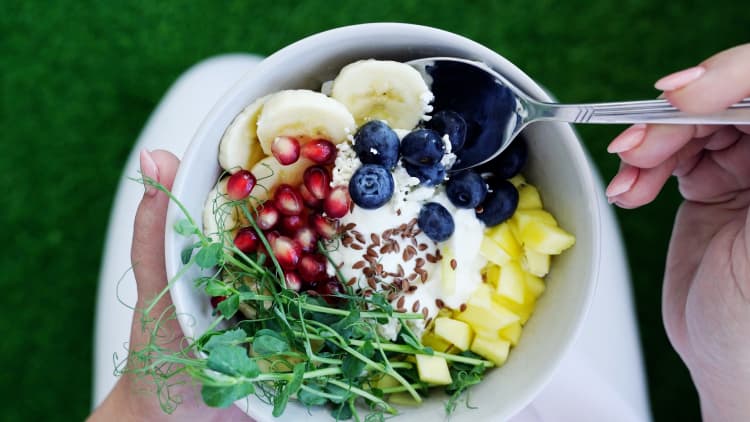In one of his famed self-portraits, Omar Victor Diop, a Senegalese photographer and artist, wears a three-piece suit and an extravagant paisley bow tie, preparing to blow a yellow, plastic whistle. The elaborately staged photograph evokes the memory of Frederick Douglass, the one-time fugitive slave who in the 19th century rose to become a leading abolitionist, activist, writer and orator, as well as the first African American to be nominated for vice president of the United States.
Diop is no stranger to portraying the aches and hopes of Black people across the world. Throughout his oeuvre, which incorporates historical references and costumes, he has highlighted the vital role of Black and African figures in world history, celebrated the dignity of African migrants and refugees, weaved together the history of Black protests from the Selma march to the Soweto uprising in South Africa, and examined the impact of climate change on Africa and the Global South.
Through his bold images, Diop examines the interplay between African and diasporic experiences by knitting together the past and present.
“I am fascinated and surprised about how Africa is still present in everything an African American would do; they don’t even realize it,” said Diop, who lives and works in Dakar and Paris. “Sometimes you look at an African American in reality TV and you happen to be looking at your sisters and your aunts because of the expressions — it’s translated and said in English, but she could be in Dakar, speaking Wolof.”

Omar Victor Diop
In a 2015 self-portrait (top), from Diop’s series “Project Diaspora,” the artist emulates Frederick Douglass, who was the most photographed man of his era. Douglass sat for over 160 portraits, including a daguerreotype circa 1855 (bottom), to challenge negative representations of African Americans.

Cultural Archive/Alamy
In a 2015 self-portrait (top), from Diop’s series “Project Diaspora,” the artist emulates Frederick Douglass, who was the most photographed man of his era. Douglass sat for over 160 portraits, including a daguerreotype circa 1855 (bottom), to challenge negative representations of African Americans.
Diop is interested in creating connection and community through his work, while also using history to bridge the experiences of people of African descent. By highlighting figures like Douglass or events such as the Women’s War in Nigeria, he said, he hoped to not only kickstart a conversation within the upcoming generation but also deepen the relationship between Africa and the diaspora.
“There are so many inspiring stories that can have significant resonance on the continent and vice versa,” he said. “I think that there is an absolute need for more interaction. We don’t even know each other enough.”
Diop was born in Dakar in 1980 to a father who is a chartered accountant and a mother who is a lawyer. He became a full-time artist over a decade ago, after years of studying finance in Senegal and France and working in corporate communications in Dakar, Nairobi and Lagos.
The self-taught Diop, whose tableaux have been exhibited all over the world, builds on the rich tradition of the West African studio portraiture practiced by artists like Mama Casset (Senegal), Malick Sidibé (Mali) and Samuel Fosso (Nigeria). But his work is not bound by the traditions of studio photography: As he embarks on a project, Diop obsessively reads about his subjects, talks to historians and even tries to replicate his subjects’ sartorial choices, such as the Rev. Dr. Martin Luther King Jr.’s suits or Trayvon Martin’s hooded sweatshirt.
“The imagery of fashion, the language of fashion is a tool for me to enter the minds” of viewers, he said. “It’s creating an image that is very attractive as a way to camouflage the heavy subjects that I am bringing. And it is also a way for me to celebrate the memory that I am bringing.”
In early October, Diop announced a new project called “Being There,” which explores the place of race and identity in America in the years following World War II.
Diop is also planning on producing educational materials, including books and games, that will engage young African and diasporic audiences on issues like art and climate change. He hopes to show how their stories of struggle and success are interconnected across centuries and continents.
“I am a firm believer that there is an African spirit of resilience, of excellence despite everything that has been thrown at us,” he said.
Credit: Source link














